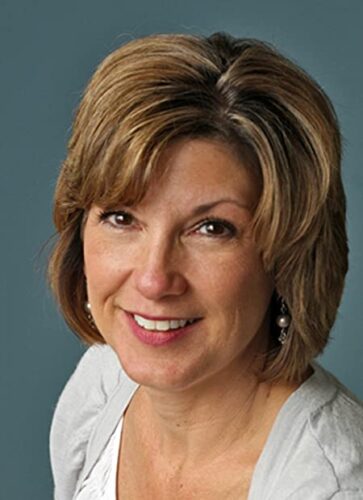Cover Reveal and Interview with Candace Fleming and Eric Rohmann: POLAR BEAR!
I’m perfectly aware that I’m spoiled. Spoiled by the amount of sheer talent currently residing in the Chicago area. And when I say “talent” I am of course referring to the great children’s book writers and illustrators that dwell within a certain radius. Sometimes they even live in the same home. Candace Fleming and Eric Rohmann are a pretty darn good example of this. If you’ve seen the work that they done together recently then you know that books like Giant Squid and Honeybee are some of the most gorgeous and marvelously written nonfiction nature picture books coming out today. Now we learn that their latest is due on November 1, 2022. The title? Polar Bear.
Today, I speak with Candace and Eric about their work, life, and their general, delightful existence:
Betsy Bird: Thank you, both of you, for answering my questions today! And it’s so lovely to see that you’ve another nonfiction pairing in the works. Candace, let’s start with you. I know that you and Eric have worked together in the past on a book about giant squids and, in a complete turnaround, on bees. With POLAR BEAR you’re finally going with a mammal. Before we get into it, though, did you always intend for these books to be a series from the start or did it just sort of happen naturally?
ADVERTISEMENT
ADVERTISEMENT

Candace Fleming: Hi, Betsy! Thanks for letting us drop by to chat about Polar Bear. You know, I can’t believe we’re about to publish a third animal book. Eric and I certainly never expected to write a series. We thought Giant Squid would be a one-off. Then our editor Neal Porter asked, “What’s next?” Eric and I pretty quickly settled on the honeybee because… well… the first book had been about a big creature that’s rarely seen, so the idea of making a second book about a small creature that’s frequently seen appealed to us. We thought Honeybee would be a two-off. Then Neal asked, “What’s next?” And we pretty quickly settled on polar bears. Both of us have a deep affinity for them. Additionally, we liked the shape of the three books together: cephalopod, insect, mammal.
BB: Oo. I love that as a trio. Eric in GIANT SQUID you were covering something huge and difficult to see firsthand. HONEYBEE, in contrast, was where you made the bees enormous on the page. Now you’ve a polar bear, which seems (size-wise anyway) like a kind of compromise between the two other creatures. Did you watch any polar bears live in the course of your own research? And how did you go about bringing them to life for this book?
Eric Rohmann: The changes in size and scale on the page are always a challenge and are the main factor how to realize the images. With polar bears you already have a great deal of familiarity with the look of the animal so I felt I could play with the viewpoint and show the bears close and distant. We never did get to the arctic even though we thought about a trip (pandemic said no), but I watched lots of video of polar bears, looking specifically at the way they move and interact with one another. A still photo will give you a good sense of the creature, its shape, coloration, details, etc. but drawing a living, moving bear informs you about her shifting mass it she moves in snow, or the jaunty energy of a cub just emerged from the den for the first time. For the artist, it’s essential to have this information as you work. You are not painting statues, but animate, vital creatures. I try not to aim for a perfectly accurate realism—you can use photographs to do that— but to make art that describes and informs but still is read as an image made by hand. In this way, through brushwork, color and drawing the image is true and natural, but never static. I want to make art, not taxidermy.
BB: Good line. Candace, why did you two decide that the next book you’d do would be POLAR BEAR? Few animals are as symbolic in the fight against climate change. Was that the sole reason or did you have others that you wanted to explore?
CF: So, you already know that we chose polar bears because we’re beguiled by the animal – its ferocity and majesty, its incredible beauty, its heartbreaking and heartwarming life on the ice. I confess that its plight wasn’t something I initially considered… at least not deeply. I just pass my love of polar bears onto my readers. I wanted to connect them emotionally to one mother polar bear valiantly (and I don’t use that word lightly) raising her two cubs. I don’t believe that can be done with a string of fascinating facts or a compilation of grim statistics. Instead, I chose to get into the mother bear’s skin without anthropomorphizing, capturing the smells, sounds and feel of the Arctic. My goal is for kids to become engaged with this one polar bear family; share its world. There is a tragic truth shadowing every page: the bear’s rapidly changing world due to climate change. Life on the ice has always been a fragile balance. Global warming is making that balance even harder. But instead of stating this, the story shows readers the affects of shrinking ice and unpredictable weather. They see for themselves by watching one family’s struggles.
I deeply believe that if kids come to care about this one polar family, they will care about all polar bears. A world without them will truly matter. And their newfound empathy for these Arctic creatures will be transformed into action (suggestion for which can be found in the book’s backmatter).
BB: Eric, I happen to remember that this is definitely not your first polar bear. One only has to look at the cover of the American editions of HIS DARK MATERIALS to know that you’ve been making polar bears for years. Heck, at my workplace (Evanston Public Library) I believe the children’s room even has original art from you involving OTHER polar bears from other books. What is it about those furry white guys that draws you in time and time again?

ER: If I were to show you my journal/sketchbooks made over the last 25 years you’d find hundreds of drawings of bears. They are one of those creatures both wild, yet somehow close to human. We see bears in myths and stories in just about every place that bears live. They are both frightening and sympathetic, feral and intelligent.
BB: Candace, was there anything that surprised you about polar bears in the course of your research? For example, I remember being continually surprised by some of the facts you mentioned in HONEYBEE. Do polar bears have secrets of their own worth exploring with kids?
CF: How much time to you have, Betsy? Polar bears are wondrous creatures! They not only surprised me, they amazed me. Just the fact of a polar bear’s birth is nothing short of miraculous. Think about it. How can a creature no bigger than your hand, who is blind, deaf, and has nothing but downy hair covering its body be born into one of the planet’s most forbidding environment during the darkest, coldest part of winter? And not just born, but thrive? Centuries of evolutionary adaptations have created a process in which a tiny, helpless cub can grow into 1,400 pound apex predator – in two years! It boggles my mind.
Did you know a mother bear travels the same route taken by her mother, and her mother’s mother? Generations have, and will, walk familiar paths. Over and over. Year after year. They find their way by instinct, by heart, by the look and feel of the place – the warmth of the sun, the sound of the birds, the feel of the wind. All of that and more stays in their memories. Can you believe it? Every step. Every sound. Every smell. It’s like some sort of heartscape – a heartscape of the Hudson Bay.
ADVERTISEMENT
ADVERTISEMENT
Okay, last one I promise (but you did ask). A mother polar bear spends a little over two years with her cubs. In that time, her greatest struggle is feeding herself. By the time the family leaves their den in April, mom has gone without food for nine months. Now she has to walk forty miles to the ice. Once there she has to hunt… and hunt… and hunt. She needs seal blubber to restore the fat she lost during her long fast. And she needs extra fat because she’ll soon be fasting again with the coming of summer. All the while, her cubs are nursing… and nursing… and nursing. There’s no fasting for them. They’re growing… and growing… and growing. To keep up, mom converts more than two pounds of her own stored fat into milk each day. Two pounds! Mother’s biggest struggle is keeping sufficient fat on her body – for herself and her babies.
BB: Eric, I know that your editor is Neal Porter. I can’t know your process, but I’m often curious about early drafts. Did you have any initial ideas that had to be left on the cutting room floor (so to speak)?
ER: This is where oil painting and writing diverge! The writer writes a draft and puts it aside and uses what they have written to make edits, changes, re-writes, improvements. Most keep the drafts (Candy has bins and bins of what didn’t make the cut). All my drafts, all the images “left on the cutting room floor” are overpainted by layers and layers of attempts, mistakes, poor drawing, inappropriate color, and clumsy choices until I arrive at something that I can keep. This does not mean that the finished painting is exactly right. Usually about half the paintings I “finish” could use more work, but there is always a deadline to honor. With half the paintings I turn to what Matisse said about his paintings: “I don’t finish paintings, I abandon them.” The other half find their way through painting and repainting.
A pitch perfect ending. I’d like to thank both Candace and Eric for so patiently answering my questions today.
And here, lo and behold, is their gorgeous gorgeous cover:

Polar Bear is on shelves everywhere November 1st with Neal Porter Books (an imprint of Holiday House). Thanks too to Aleah Gornbein and the folks of Holiday House for setting this up!
Filed under: Cover Reveal, Interviews
About Betsy Bird
Betsy Bird is currently the Collection Development Manager of the Evanston Public Library system and a former Materials Specialist for New York Public Library. She has served on Newbery, written for Horn Book, and has done other lovely little things that she'd love to tell you about but that she's sure you'd find more interesting to hear of in person. Her opinions are her own and do not reflect those of EPL, SLJ, or any of the other acronyms you might be able to name. Follow her on Twitter: @fuseeight.
ADVERTISEMENT
ADVERTISEMENT
SLJ Blog Network
Should I make it holographic? Let’s make it holographic: a JUST ONE WAVE preorder gift for you
Magda, Intergalactic Chef: The Big Tournament | Exclusive Preview
Fifteen early Mock Newbery 2026 Contenders
When Book Bans are a Form of Discrimination, What is the Path to Justice?
RA Tool of the Week: Inside Out Inspired Emotions, but Make it YA Books
ADVERTISEMENT








I’m SO looking forward to reading this book! Thanks for sharing a bit of the process.